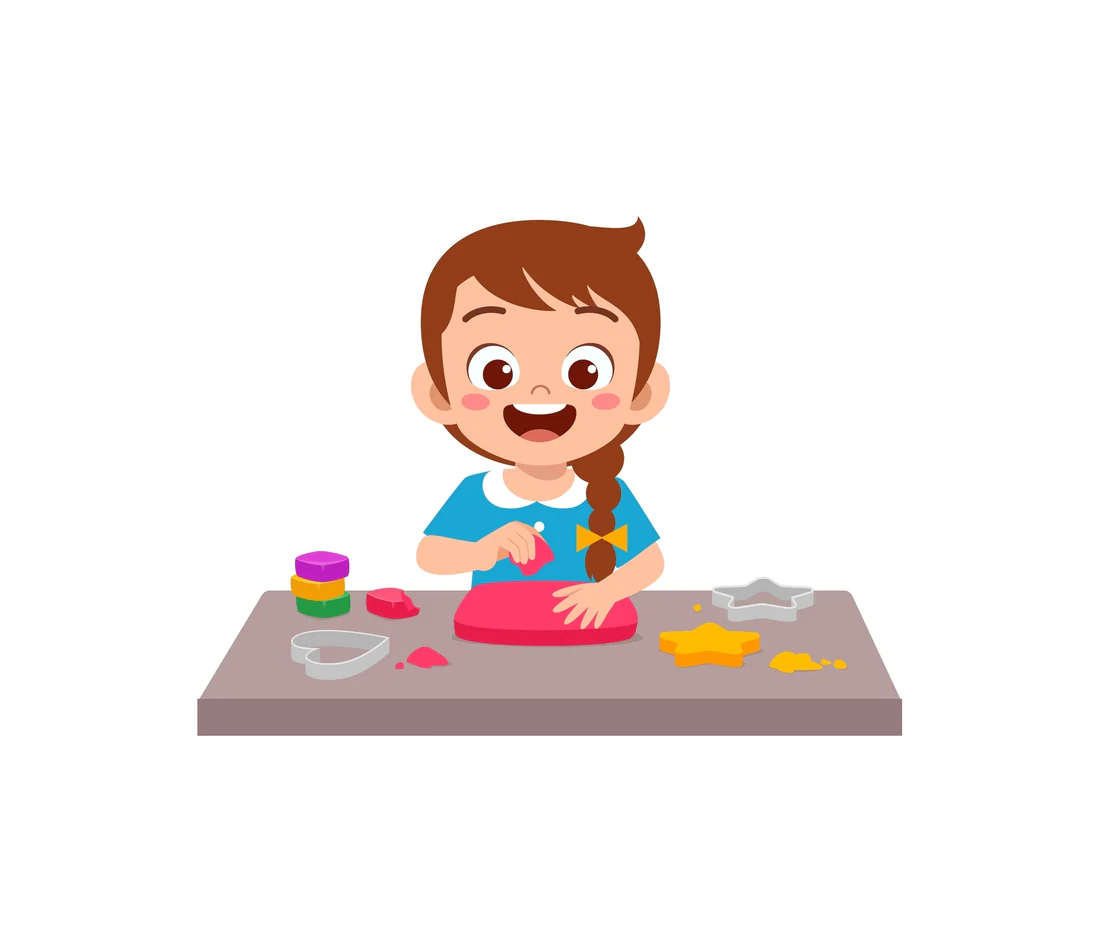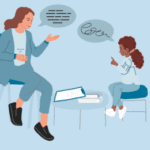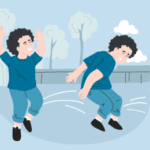
Neurodevelopmental Disorders & Learning Differences
- Dyslexia in Children: Symptoms, Causes & Best Therapies
- Dysgraphia in Children: Symptoms, Diagnosis & Treatment
- What Is Dyscalculia? Symptoms, Causes & Treatment
- Specific Learning Disorder with Impairment in Reading | Symptoms, Treatment & Therapists Near You
- Nonverbal Learning Disorder (NVLD): Symptoms, Causes & Therapies
- What Is Giftedness in Children? Signs, Support & Therapists
- Language Processing Disorder in Children: Signs, Therapy & Support
- Language Disorders in Children: Signs, Types & Therapy
- Delayed Speech in Children: Causes, Signs, and Therapy Options
- Executive Function Disorder in Children: Signs, Support & Therapy
- Apraxia of Speech in Children: Signs, Diagnosis & Therapy
- Understanding Intellectual Disability in Children: Signs, Support & Therapies
- What Is Twice-Exceptional (2e)? Signs, Challenges & Support for Gifted Children with Disabilities
- Global Developmental Delay (GDD)
Language Disorders in Children: Signs, Types & Therapy

Authored by: The DrSensory Editorial Team
Reviewed by: 🛡️ DrSensory Clinical Review Board
Last updated: June 2025
Language Disorders in Children: A Complete Guide for Families & Professionals
Language disorders affect how children understand, process, and use spoken and written language. These challenges can impact every area of development—from academic success to social skills and emotional regulation.
What Are Language Disorders?
A language disorder is a condition that makes it difficult for a child to understand, express, or process language. This is different from a speech disorder, which affects how sounds are formed. Language disorders can be:
- Receptive: Trouble understanding words and language
- Expressive: Difficulty using words to express thoughts
- Mixed: Challenges with both understanding and expressing language
These disorders can be developmental (present from early childhood) or acquired (resulting from injury or illness).
Types of Language Disorders
1. Receptive Language Disorder
- Difficulty following directions
- Trouble understanding questions or stories
- Appears to ignore or misunderstand spoken language
2. Expressive Language Disorder
- Limited vocabulary for age
- Short, grammatically incorrect sentences
- Struggles with storytelling or answering questions
3. Mixed Receptive-Expressive Language Disorder
- Combination of both understanding and expressing difficulties
- Often more complex to diagnose and treat
4. Language Processing Disorder
- A subtype of auditory processing disorder
- Difficulty interpreting the meaning of spoken words
- Trouble following conversations or responding quickly
Early Signs of Language Disorders
Language disorders may appear as early as age 2 or 3. Common signs include:
- Delayed speech milestones
- Limited vocabulary
- Difficulty naming objects or answering questions
- Poor comprehension of spoken language
- Struggling to follow simple directions
- Frustration or behavior issues linked to communication breakdowns
How Language Disorders Affect Learning and Behavior
Children with language disorders often experience:
- Reading and writing difficulties
- Problems with spelling and grammar
- Trouble making and keeping friends
- Low self-esteem or school avoidance
- Behavioral outbursts due to communication frustration
What Causes Language Disorders?
Language disorders can have many causes, including:
- Genetic factors (family history of language delay)
- Neurological differences (e.g., ADHD, autism)
- Premature birth or birth trauma
- Hearing loss or chronic ear infections
- Brain injury or illness
- Sensory processing difficulties
Early identification and therapy are essential for minimizing long-term challenges.
How Are Language Disorders Diagnosed?
Diagnosis usually involves a team approach, including:
- Speech-language evaluation by an SLP
- Cognitive and developmental screenings
- Hearing assessment
- Observations across home and school settings
- Parental interviews and teacher feedback
At DrSensory, you can find licensed professionals who offer in-person or telehealth evaluations.
Therapy Options for Language Disorders
✅ Speech-Language Therapy (SLP)
- Core intervention for all language disorders
- Includes vocabulary development, grammar, comprehension, and narrative skills
- Personalized therapy plans with measurable goals
- Parent coaching to support carryover at home
✅ Occupational Therapy (OT)
- Addresses sensory processing, executive function, and social communication
- Supports children who struggle with attention, transitions, or motor planning
- Visual aids and tools to enhance comprehension and expression
✅ Physical Therapy (PT)
- Helps children with coexisting motor delays that affect communication readiness
- Improves posture, coordination, and endurance for classroom engagement
- Especially helpful in children with neurodevelopmental conditions
🧑⚕️ Find Language Disorder Specialists Near You
Finding the right therapist can make a life-changing difference. DrSensory helps families connect with:
✅ Experienced speech-language pathologists
✅ Multidisciplinary providers (OTs, PTs, and more)
✅ Therapists who understand neurodivergence, sensory needs, and executive function
✅ Local and telehealth options based on your preferences
📣 Are You a Therapist Supporting Children With Language Disorders?
Join DrSensory’s growing network of child development professionals. Showcase your expertise and reach families who need your services.
- Highlight your certifications and specialties
- Get found by parents searching for targeted help
- Expand your caseload with highly motivated families
❓ Frequently Asked Questions (FAQs)
What’s the difference between a speech delay and a language disorder?
Speech delay involves how words are spoken; a language disorder affects understanding and using words meaningfully.
Is language disorder the same as dyslexia?
No, but they can co-occur. Dyslexia affects reading, while a language disorder affects oral language comprehension and expression.
Can language disorders be cured?
They can’t be “cured,” but early and consistent therapy significantly improves communication outcomes.
Is my child just a late talker?
Late talking may be typical, but if your child shows other signs—like trouble understanding instructions or forming sentences—get a professional evaluation.
This page provides general educational content and is not a substitute for professional medical advice. Always consult a licensed provider for diagnosis and treatment.
View privacy policy, copyright and trust info
More on Neurodevelopmental Disorders & Learning Differences

- Dyslexia in Children: Symptoms, Causes & Best Therapies
- Dysgraphia in Children: Symptoms, Diagnosis & Treatment
- What Is Dyscalculia? Symptoms, Causes & Treatment
- Specific Learning Disorder with Impairment in Reading | Symptoms, Treatment & Therapists Near You
- Nonverbal Learning Disorder (NVLD): Symptoms, Causes & Therapies
- What Is Giftedness in Children? Signs, Support & Therapists
- Language Processing Disorder in Children: Signs, Therapy & Support
- Language Disorders in Children: Signs, Types & Therapy
- Delayed Speech in Children: Causes, Signs, and Therapy Options
- Executive Function Disorder in Children: Signs, Support & Therapy
- Apraxia of Speech in Children: Signs, Diagnosis & Therapy
- Understanding Intellectual Disability in Children: Signs, Support & Therapies
- What Is Twice-Exceptional (2e)? Signs, Challenges & Support for Gifted Children with Disabilities
- Global Developmental Delay (GDD)
Find a Therapist near you
Are you looking for a physical, occupational, or speech therapist in your area?
Look no further than the DrSensory Therapist Database and Clinic Directory!
Find a Therapist
Find the physical therapist, occupational therapist, or speech language pathologist you’re looking for!
Ask Us Anything
Whether you are looking for advice, have a general question about sensory processing, or looking for resources.
Submit Your Story
Share your story about your child. Let’s celebrate milestones and learn more about challenges.













































































